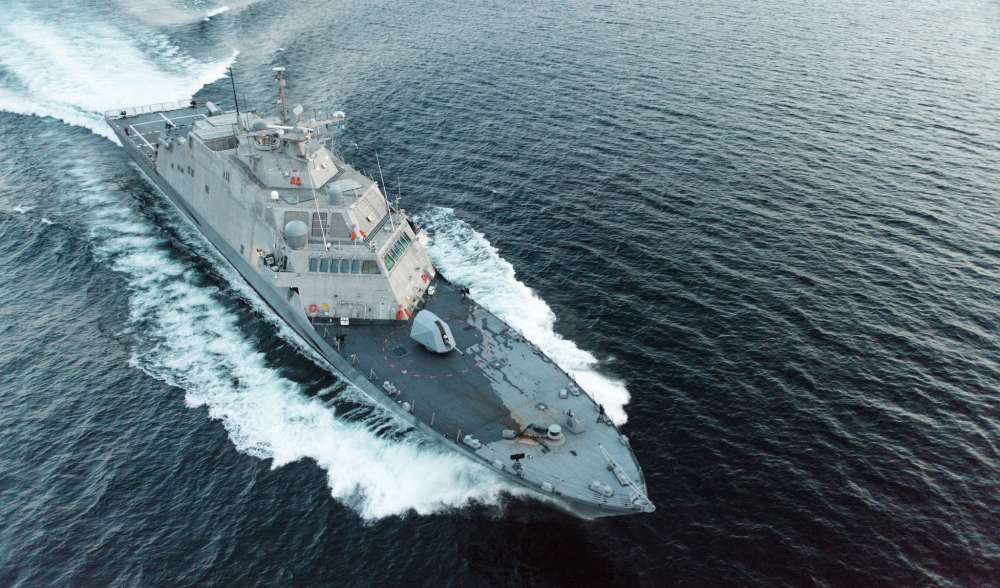
Littoral combat ship Little Rock (LCS 9) is underway during a high-speed run in Lake Michigan during acceptance trials
Naval ordnance experts will be testing heavy weapons precision ammunition, that could hit enemy drones “like a shotgun blast,” offering a counter-unmanned aircraft system (C-UAS) shield for littoral combat ships (LCS).
Rogue civilian drones and enemy attack and surveillance UAS are a growing concern across the military, especially after swarms of drones attacked Saudi Arabian oil facilities last September. Two months earlier, a Marine Corps anti-drone system downed an Iranian UAS that got within 1,000 yards of a Navy ship in the Strait of Hormuz.
“There’s a lot of interest in the Navy now for a counter drone system,” said Kevin Knowles of Northrop Grumman Mission Systems. “How do you shoot down these quadcopters? Trying to hit them with a round is not that easy,” he added.
Northrop Grumman, which makes mission modules for the LCS, is exploring something called precision air burst munition for the twin 30 mm guns in one of the Surface Warfare Mission Modules. A laser range finder on the gun determines the range.
“There’s a modification that would need to be made to the gun to fire the round,” Knowles explained Jan. 16 at the Surface Navy Association convention. “It actually programs the round to fly out a certain distance. And then it blows up almost like a shotgun blast,”
he said, noting the point-and- shoot proximity round can actually detect the target and gets about a certain distance away before exploding.
The Naval Surface Warfare Center Dahlgren Division (NSWCDD) is slated to run tests on the proximity rounds in the Spring, he said.
“And so, assuming that test goes well, then we’ll start putting those rounds in the magazines” of the 33 mm guns on both the Freedom and Independence variants of the LCS. Because the 30 mm gun has a dual ammunition feed, the high explosive rounds the guns now fire could be loaded in one feed while the precision air burst proximity rounds could be fed into the other. “That will give the LCS a counter UAS capability,” Knowles said.
Source: Seapower
